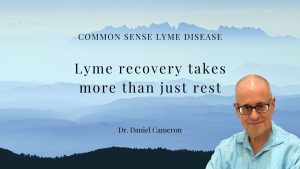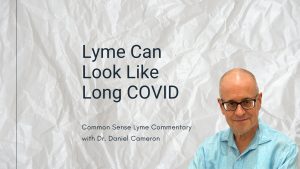Call for your appointment today 914-666-4665 | Mt. Kisco, New York

Disulfiram was initially marketed in the U.S. as Antabuse as an alcohol sobriety aid which deters alcohol consumption by eliciting physical discomforts (e.g., headache, nausea, hypotension). It’s use as a possible treatment for Lyme disease has been described in several recent studies.
Borrelia burgdorferi, the bacteria responsible for Lyme disease, possesses survival strategies in humans. “Current antibiotic therapies (e.g., doxycycline) for early Lyme disease have been shown to be less effective against stationary phase spirochetes,” wrote the authors.¹
In 2006, disulfiram was identified as a potent inhibitor of stationary-phase B. burgdorferi persisters.¹
In vivo models in a Lyme disease mouse model demonstrated that intraperitoneal disulfiram could reduce cytokine levels, antibody titers, and overall B. burgdorferi burden in the heart, ear, and bladder in the 21 days post-treatment group, wrote the authors.¹
In 2020, a different research group looked at minimum inhibitory concentration (MIC) to detect for viability.
Investigators found that Borrelia bacteria were more likely to survive with doxycycline and amoxicillin, but not cefuroxime, compared to disulfiram.²
In a similar study, the addition of doxycycline, amoxicillin, and cefuroxime mildly reduced the survival of the Borrelia bacteria.
Disulfiram for the treatment of Lyme disease
In 2019, Dr. Kenneth Liegner described the use of disulfiram (DSF) in three patients with chronic relapsing borreliosis. “In two of the patients, DSF eliminated the need for retreatment with antibiotics during the observation period. The third patient was symptom-free for six months and retreated with DSF.”³
In his article, “Disulfiram (Tetraethylthiuram Disulfide) in the Treatment of Lyme Disease and Babesiosis: Report of Experience in Three Cases,” Liegner points out that “12 of 33 (36.4%) patients who completed one or two courses of “high-dose” therapy enjoyed an “enduring remission”, defined as remaining clinically well for ≥6 months without further anti-infective treatment.” wrote Liegner and colleagues.³
Disulfiram can lead to side effects. In Liegner’s first paper, “each of the three patients reported adverse effects from treatment ranging from fatigue to psychotic episodes.”²
In Liegner’s second paper, there was a high-dose (≥4 mg/kg/day) and low-dose group (<4 mg/kg/day). “The most common adverse reactions from disulfiram treatment in the high-dose group were fatigue (66.7%), psychiatric symptoms (48.5%), peripheral neuropathy (27.3%), and mild to moderate elevation of liver enzymes (15.2%),” wrote Liegner and colleagues.³
“We observed that although patients on high dose [disulfiram] experienced a higher risk for adverse reactions than those on a low dose, high-dose patients were significantly more likely to achieve enduring remission,” Liegner wrote.
The French Federation against Tick Borne Diseases conducted a self-reported survey to its members with post-treatment Lyme disease syndrome (PTLDS). “Pain and fatigue benefits were reported in 44% of the 16 patients that responded,” wrote the authors. They added, a higher sensitivity to DSF-induced toxic or side effects (e.g., cognitive issues, pain, and fatigue) was demonstrated in PTLDS (13/16) than alcohol dependence treatment (1/15,000).¹
In 2019, a clinical trial of the use of disulfiram in PTLDS was registered in the U.S. “The 14-week randomized, double-blind, placebo-controlled pilot study will evaluate the side effects, tolerability, and clinical effectiveness of DSF in twenty-four PTLDS patients between 18 and 65 years of age,” wrote the authors.¹ They added, “The participants will receive either 4 or 8 weeks of DSF titrated up from 250 to 500 mg after week one according to tolerance.” (This disulfiram trial has not been completed.)
Editor’s note: I was pleased to read that Custodio and colleagues included Lyme disease in their mini-review article “A Repurposed Drug in Preclinical and Clinical Development for the Treatment of Infectious Diseases.” I have advised my patients to be treated for Lyme disease with an antibiotic before considering disulfiram.
Related Articles:
New treatments for Lyme disease on the horizon?
Late stage Lyme disease treatment might include azlocillin in the near future
Could ketamine help manage pain in patients with post-treatment Lyme disease syndrome?
References:
- Custodio MM, Sparks J, Long TE. Disulfiram: A Repurposed Drug in Preclinical and Clinical Development for the Treatment of Infectious Diseases. Antiinfect Agents. Jun 2022;20(3)doi:10.2174/2211352520666220104104747
- Gao J, Gong Z, Montesano D, Glazer E, Liegner K. “Repurposing” Disulfiram in the Treatment of Lyme Disease and Babesiosis: Retrospective Review of First 3 Years’ Experience in One Medical Practice. Antibiotics (Basel). Dec 4 2020;9(12)doi:10.3390/antibiotics9120868
- Liegner KB. Disulfiram (Tetraethylthiuram Disulfide) in the Treatment of Lyme Disease and Babesiosis: Report of Experience in Three Cases. Antibiotics (Basel). May 30 2019;8(2)doi:10.3390/antibiotics8020072




Some people treated with disulfiram for lyme cannot tolerate more than a smaller dose. So the chance of becoming symptom free for any length of time is not good. Like with antibiotic treatment, these cases will remain chronic and will still need to keep treating. I am guessing that dapsone’s side effects may limit its use as well, especially for patients who live at a distance from the treating doctor, which is a lot of them.
I wish it were otherwise obviously.
Thanks for sharing your frustration.
I followed Dr Kenneth Liegner’s dosage plan according to your weight and self prescribed myself.
I did go into remission for 7 to 8 months which was amazing.
But it has come back with vengeance, I can’t help feel that if I was under a good practitioner maybe I could have stayed on a maintenance dose and stayed symptom free for longer.
Here in the UK there doesn’t seem to be any decent practitioners who use disulfiram or indeed even treat Lyme successfully.
If anyone can recommend a clinic in the US or Europe that would be helpful. 😉
I’ve had to get a prescription for DSF via asking for it to curtail alcohol abuse which I was able to get. I’m close to 5 months on it, although just getting to my recommended dose. I want to remain on 500 milligram for 6 months. It seems clear that the longer the recommended dose is taken the better the results.
I advise my patients who are considering disulfiram to be followed closely by their physician give the risk of adverse events.